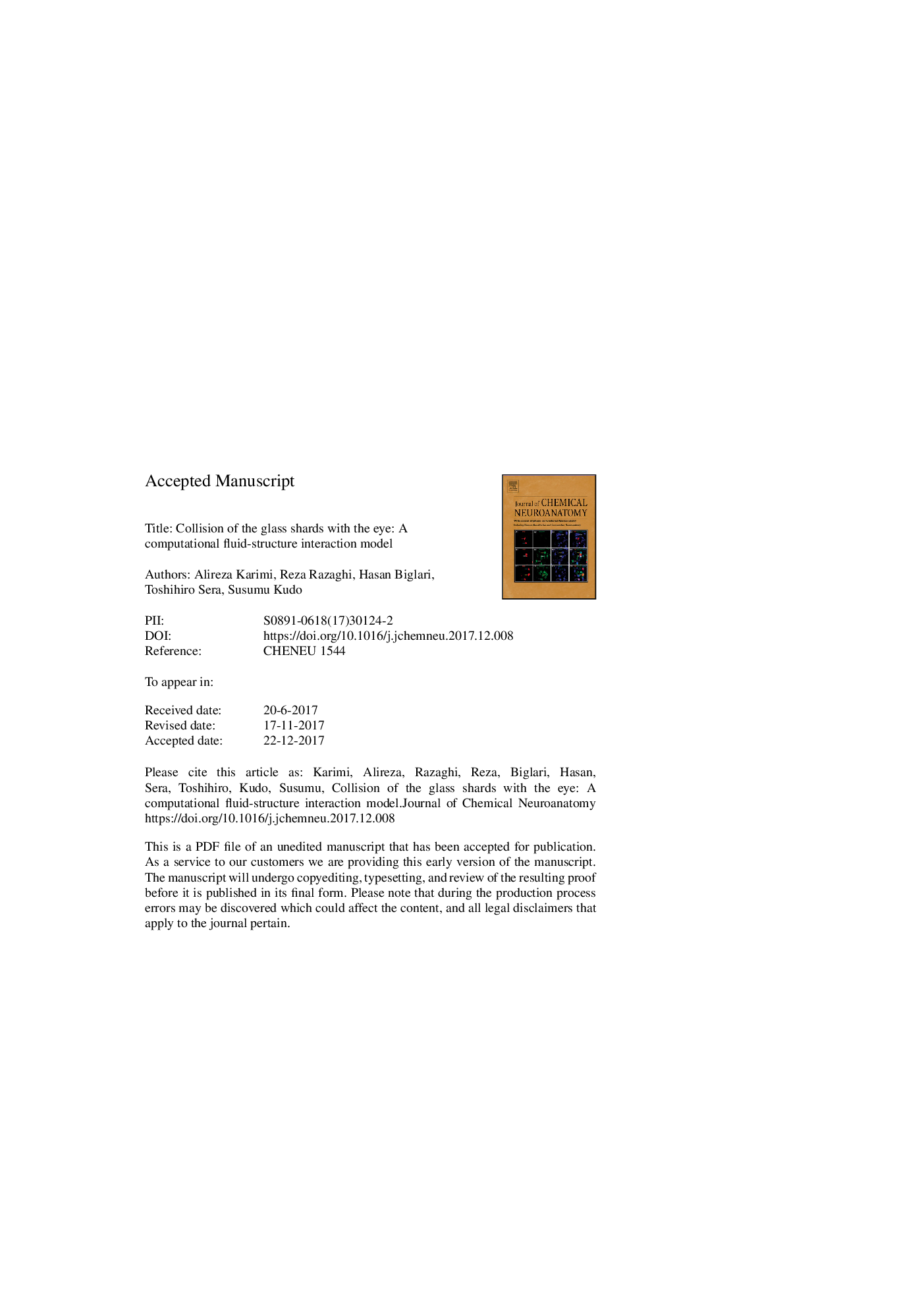| کد مقاله | کد نشریه | سال انتشار | مقاله انگلیسی | نسخه تمام متن |
|---|---|---|---|---|
| 8336138 | 1540433 | 2018 | 27 صفحه PDF | دانلود رایگان |
عنوان انگلیسی مقاله ISI
Collision of the glass shards with the eye: A computational fluid-structure interaction model
ترجمه فارسی عنوان
برخورد از قطعات شیشه ای با چشم: مدل تعامل سازنده سیالات محاسباتی
دانلود مقاله + سفارش ترجمه
دانلود مقاله ISI انگلیسی
رایگان برای ایرانیان
کلمات کلیدی
چشم انسان، قطعات شیشه ای، برخورد، تعامل مایع مایع، فشارها و فشارها،
موضوعات مرتبط
علوم زیستی و بیوفناوری
بیوشیمی، ژنتیک و زیست شناسی مولکولی
زیست شیمی
چکیده انگلیسی
The main stream of blunt trauma injuries has been reported to be related to the automobile crashes, sporting activities, and military operations. Glass shards, which can be induced due to car accident, earthquake, gunshot, etc., might collide with the eye and trigger substantial scarring and, consequently, permanently affect the vision. The complications as a result of the collision with the eye and its following injuries on each component of the eye are difficult to be diagnosed. The objective of this study was to employ a Three-Dimensional (3D) computational Fluid-Structure Interaction (FSI) model of the human eye to assess the results of the glass shards collision with the eye. To do this, a rigid steel-based object hit a Smoothed-Particle Hydrodynamics (SPH) glass wall at the velocities of 100, 150, and 200â¯m/s and, subsequently, the resultant glass shards moved toward the eye. The amount of injury, then, quantified in terms of the stresses and strains. The results revealed the highest amount of stress in the cornea while the lowest one was observed in the vitreous body. It was also found that increasing the speed of the glass shards amplifies the amount of the stress in the components which are located in the central anterior zone of the eye, such as the cornea, aqueous body, and iris. However, regarding those components located in the peripheral/posterior side of the eye, especially the optic nerve, by increasing the amount of velocity a reduction in the stresses was observed and the optic nerve is hardly damaged. These findings have associations not only for understanding the amount of stresses/strains in the eye components at three different velocities, but also for providing preliminary information for the ophthalmologists to have a better diagnosis after glass shards (small objects impact) injuries to the eye.
ناشر
Database: Elsevier - ScienceDirect (ساینس دایرکت)
Journal: Journal of Chemical Neuroanatomy - Volume 90, July 2018, Pages 80-86
Journal: Journal of Chemical Neuroanatomy - Volume 90, July 2018, Pages 80-86
نویسندگان
Alireza Karimi, Reza Razaghi, Hasan Biglari, Toshihiro Sera, Susumu Kudo,
